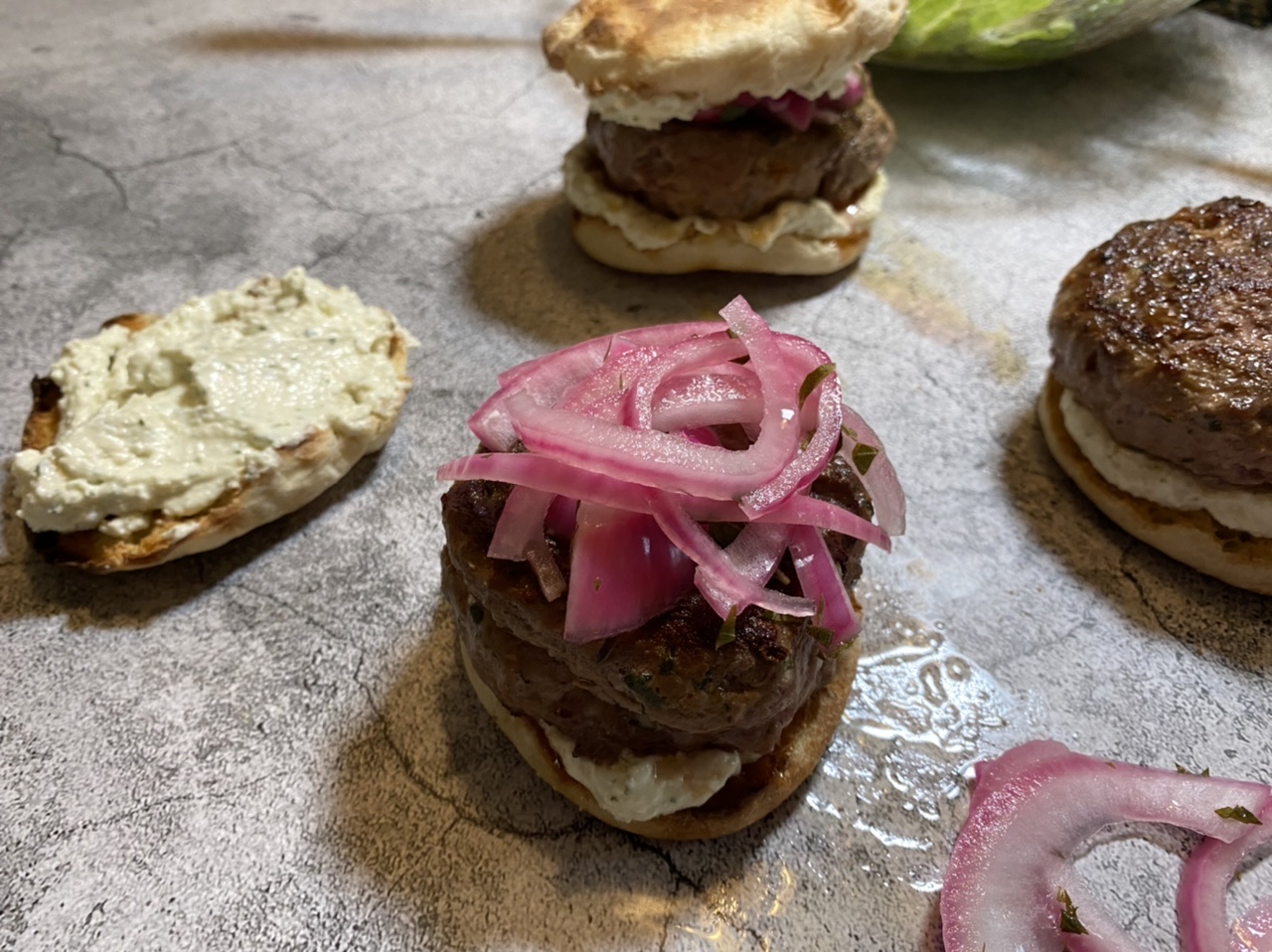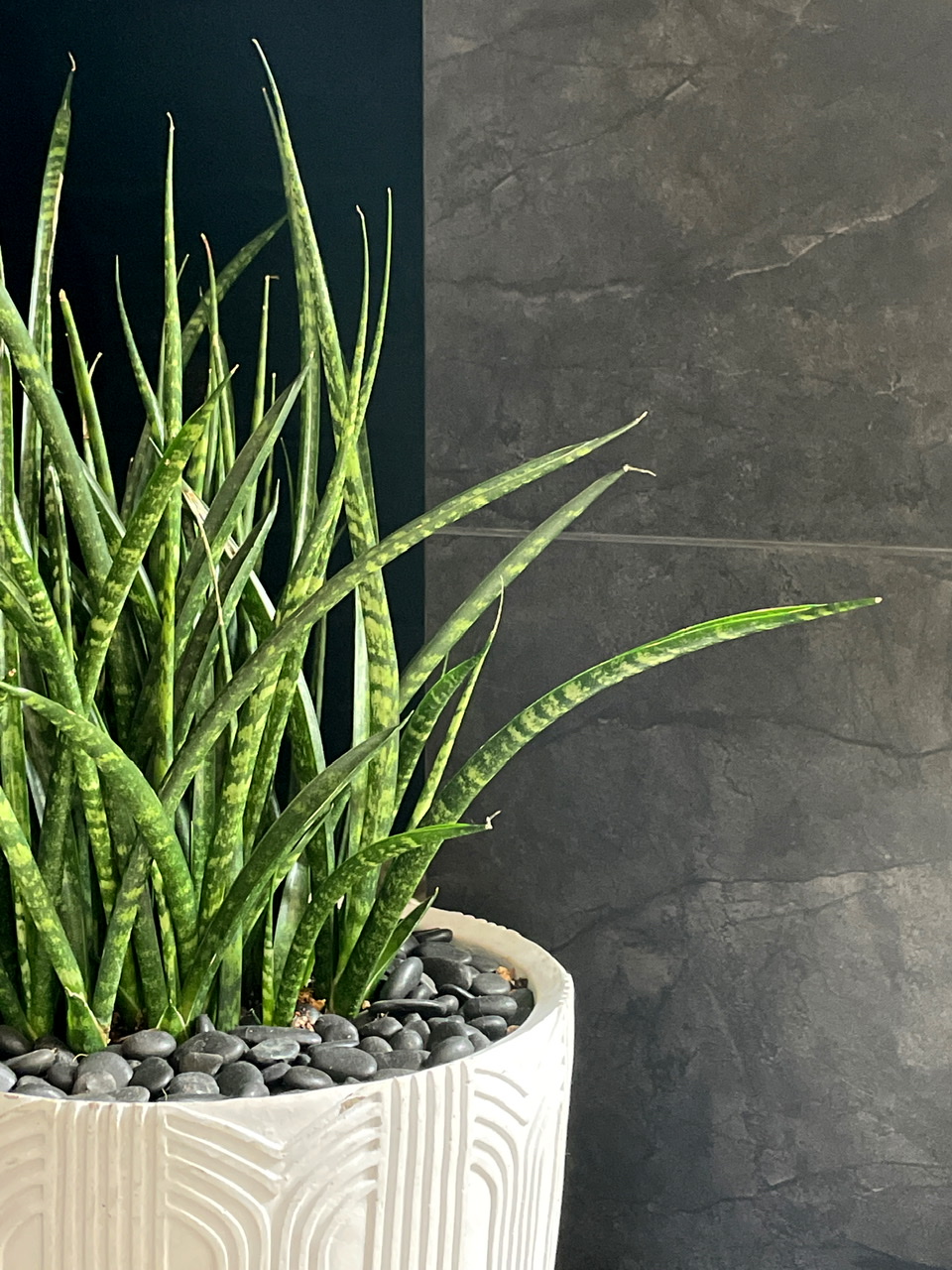
Ask most plant people for beginner-friendly plant recommendations and snake plants are sure to be mentioned. Sansevieria, or snake plants, can survive in the low-light of most homes and offices. Their leaves are sturdy and pest-resistant, and they need only the most basic maintenance. They’re also easy to find, regularly making appearances at grocery stores and in abundance at big-box hardware stores, where they are often labelled simply “indoor foliage.” Which is to say, snake plants are about as dime-a-dozen as you can get.
This might make them sound boring, but if you pass up on snake plants because they seem common, you are really missing out! I have not one or two, but FOUR snake plant varieties and would love to add even more to my collection. Each one has a unique color, shape, and feel, and they look great grouped together or set individually.
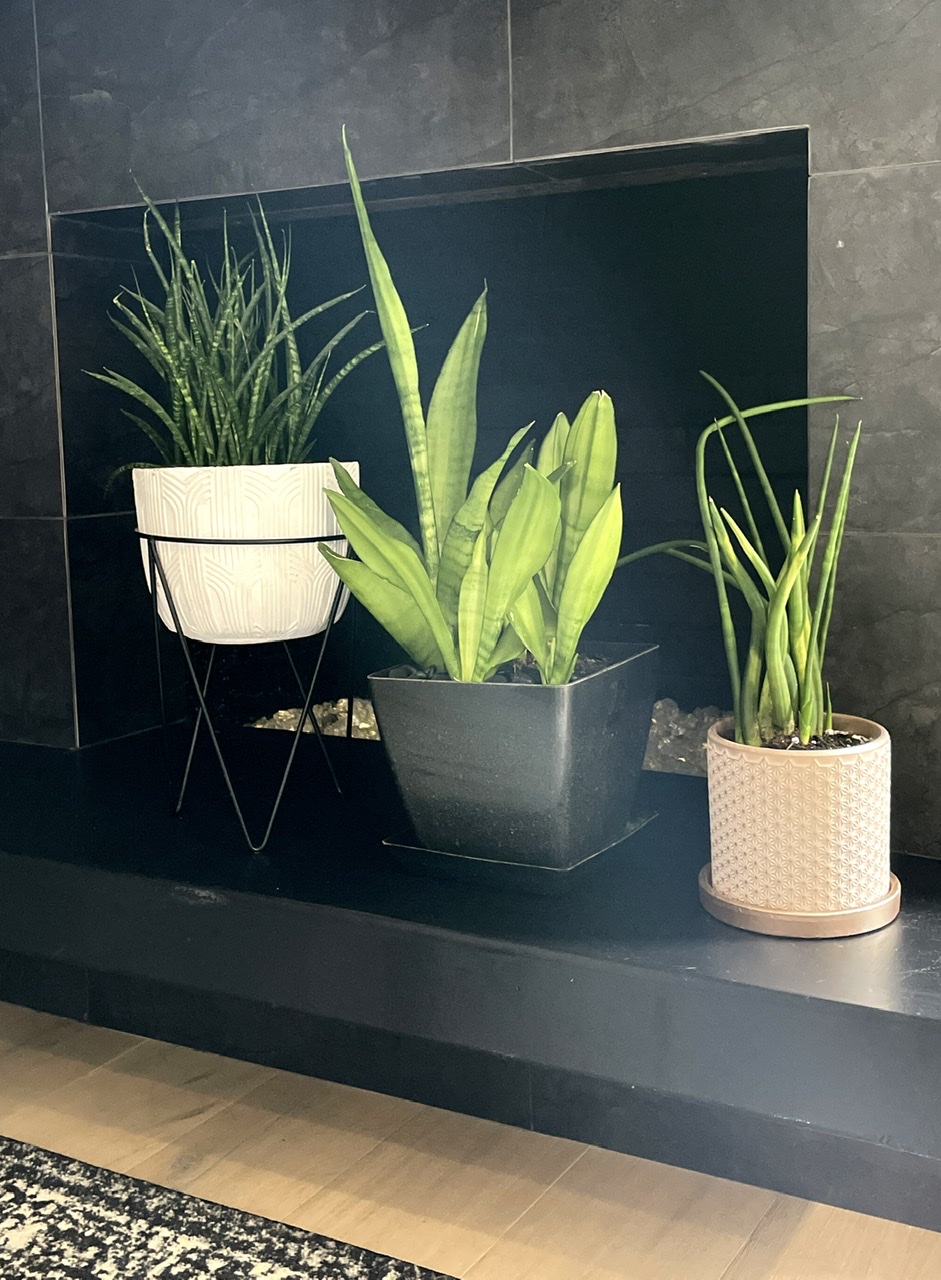
Most people would recognize the familiar sword-live upright leaves of either Sansevieria trifasciata ‘Laurentii’ or S. trifasciata ‘black coral.’ These are the two varieties I see most often, and they have a beautiful modern, structural look with leaves up to three or four feet tall. I haven’t gotten a laurentii (yet), but my black coral (the middle plant) is my largest snake plant and one that I spend a lot of time with!
When I started working from home last year, like many people I struggled to carve out a little “office.” I ended up using an extremely small 3’ x 4’ corner of my bedroom as my full-time workspace. I live for well-styled spaces, and I knew I would struggle if my work area, even as small as it was, didn’t feel separate from the bedroom. Plants are an amazing way to visually break up spaces, and to anchor smaller areas within rooms so they feel purposeful. I sprung for a large black coral snake plant, and a beautiful West Elm planter, that gives me abundant greenery and makes my office corner feel special. Best of all—from my desk chair I can peek down and see the baby snake sprouts growing!
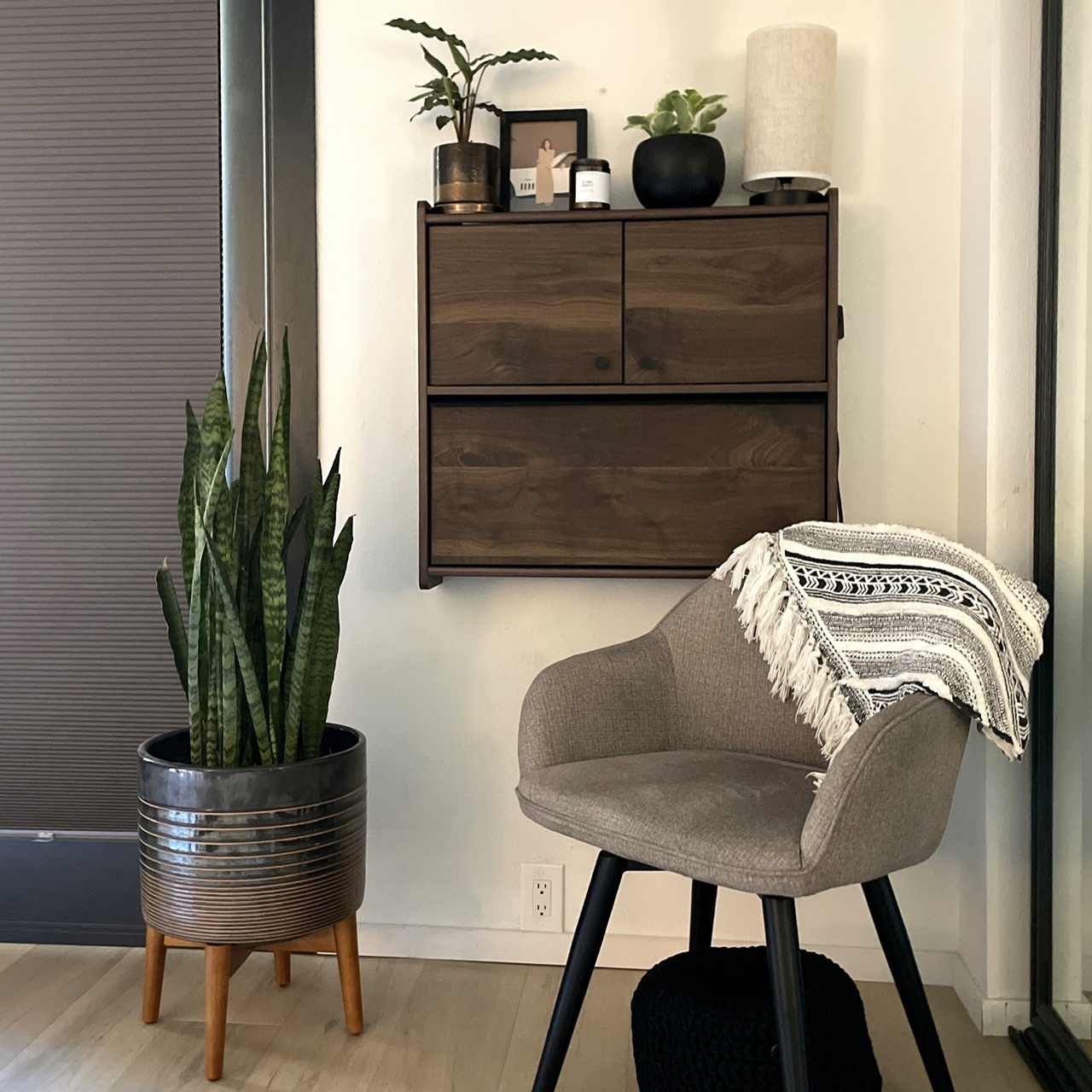
The next Sansevieria I acquired was the unfortunate result of taking my five-year-old to the plant shop and telling her she could pick whatever small plant she wanted. I am not a fan of novelty houseplants. You can keep your neon cacti and painted succulents! Of course, my daughter picked out a braided S. cylindrica. She adored this hideous plant because it “looked like Elsa’s braid.” Every time I saw it, I just felt sorry that the poor thing was squished together in an unnatural braid. Much to our surprise, it survived well with our benign neglect, and even started sprouting baby shoots! The babies grew and grew, outpacing the braid and making it look even more ridiculous. After a few months of prodding, I was ecstatic when my daughter finally agreed to give ‘Snakey’ a makeover! This weekend we repotted, and **drumroll please** unbraided the original plant!
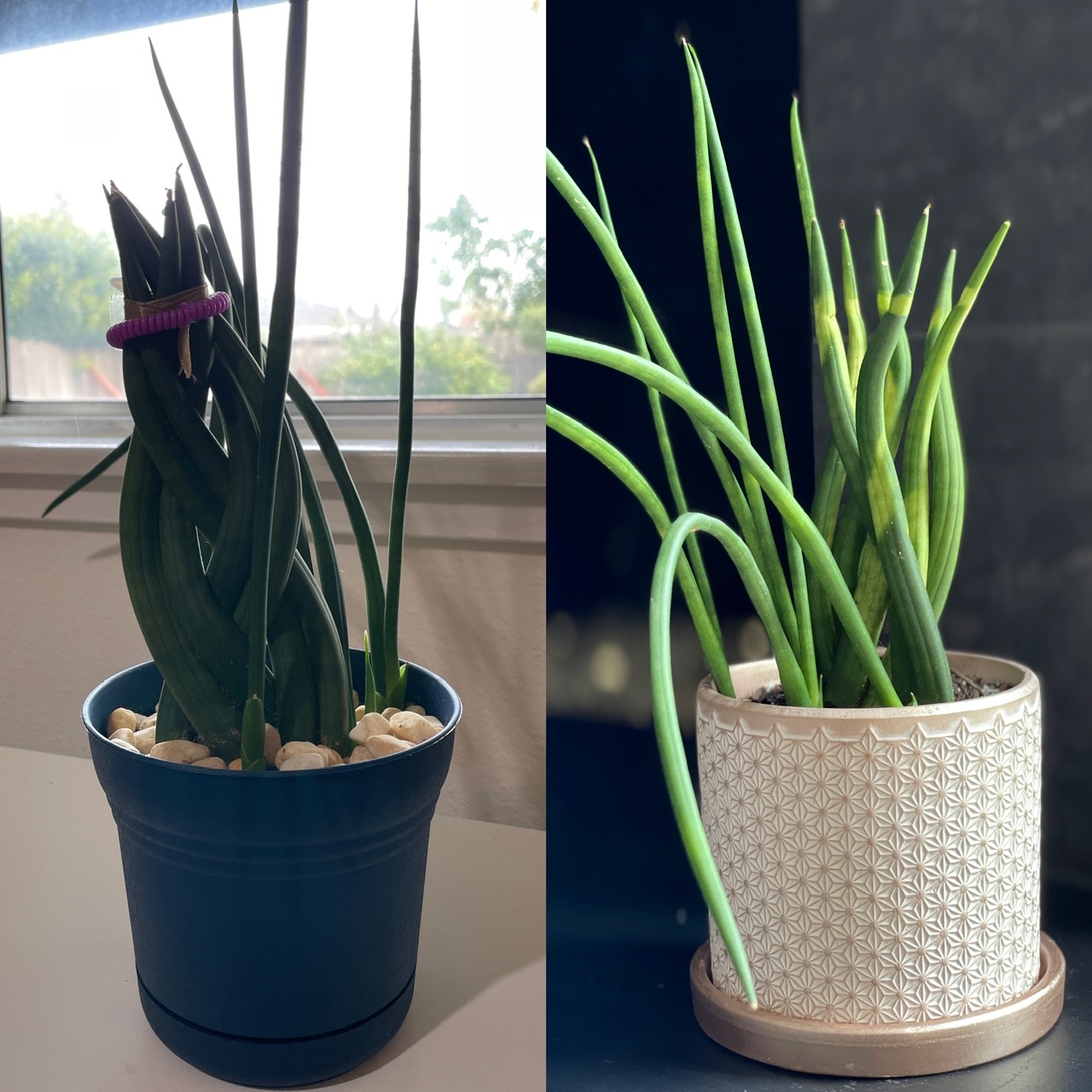
Repotting is always fun, but this was extra special getting to free her leaves! This variety is really beautiful when allowed to expand into its natural shape, and with fresh soil and a spring growing season upon us, I can’t wait to see her plant fill out.
On the topic of repotting snake plants, there are three “best practices” that will help you avoid their main pitfall of overwatering:
- Not too big of a pot—extra dirt means extra water retention and chance of root rot. Snake plants like to get cozy! My rule of thumb plant should take up at least ⅓ of the pot and not need repotting again till it is takes up about ¾ of the pot.
- Drainage holes – drainage holes are critical to keep water from sitting in the bottom. If repotting, I either choose a pot with holes, or I drill my own! Proceed at your own risk, but a 3/8” or ½” masonry drill bit does the trick for a few holes in most ceramic pots.
- Quality soil mix – I like to mix three parts of good-quality potting soil with 1 part perlite and 1 part charcoal. This mix will help with drainage, and your plant will be more forgiving of over-watering.
Following these steps will help avoid the most common mistakes of oversaturating your plant. However, despite needing very little light and very little water, they do thrive in bright light and they will suffer with perpetual underwatering. These are hard lessons I learned with my two prettiest snake plants, my fernwood and moonlight varieties. The fernwood has compact, wild, sharp leaves that are a rich dark green. And the moonlight has an almost opalescent light green glow, and broad soft leaves. Both are harder to find, but worth seeking out. Unfortunately, I was so enamored with them I kept them in my living room with less-than-optimal light. With less light, they need way less water, and eventually they ended up in a vicious cycle of too little light, too much water, then too little water. Leaves got crispy. Leaves got rotten. Not my proudest plant owner moment! But lessons were learned, and trust me—just because a plant survives in low light doesn’t mean it will thrive. A few hours of bright, indirect light will ensure your snake plants can grow and thrive.
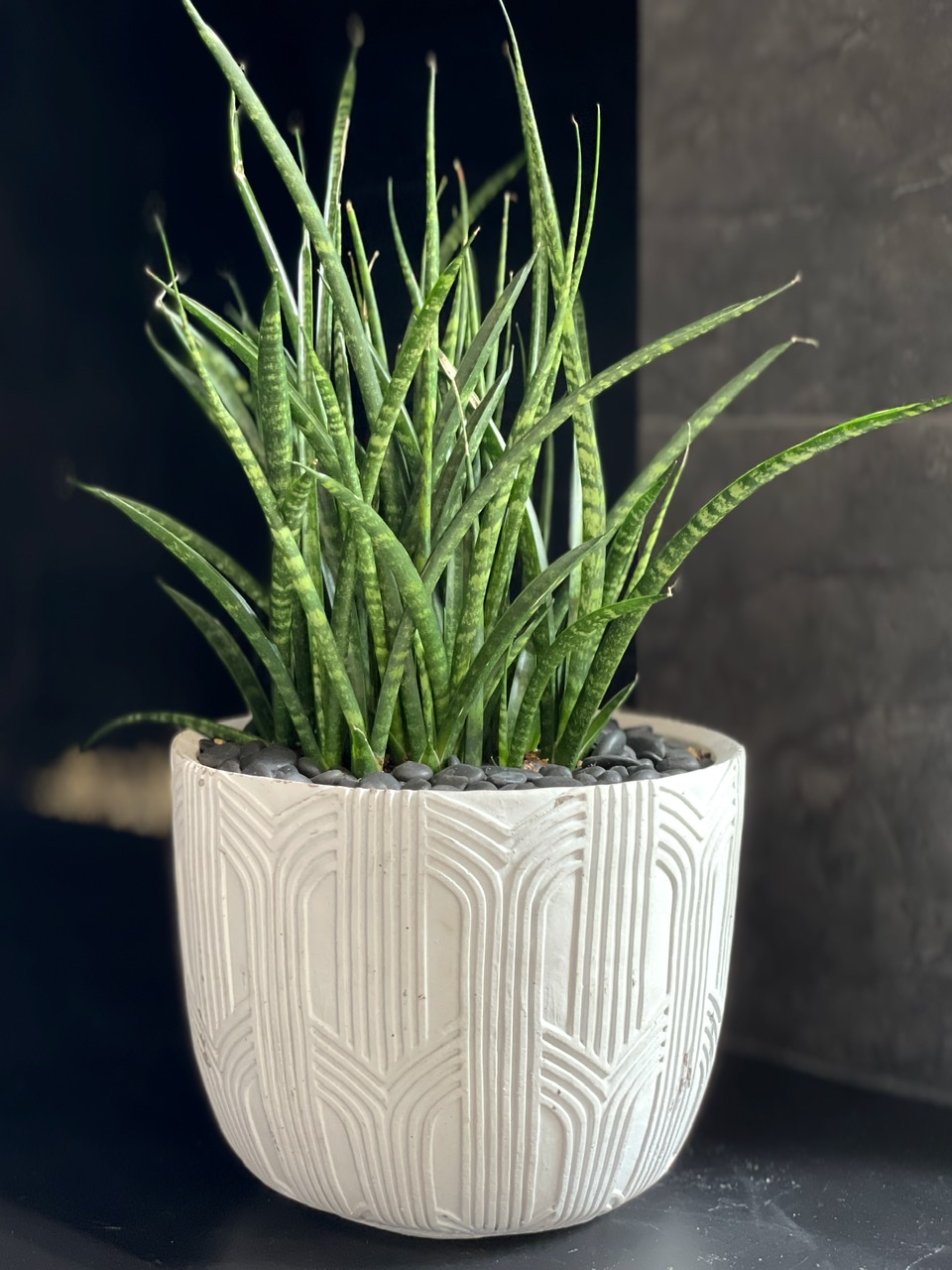
What is YOUR favorite variety snake plant? Have any snake plant troubleshooting we can help with? Leave a message in the comments or tag us on Instagram!
~diana douglas
Check out our other “Indoor Dig” posts here!

